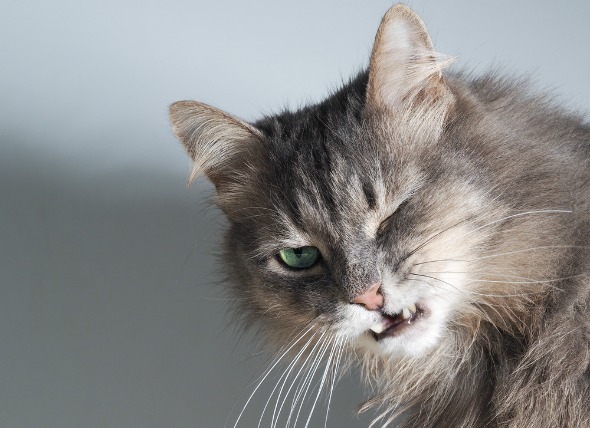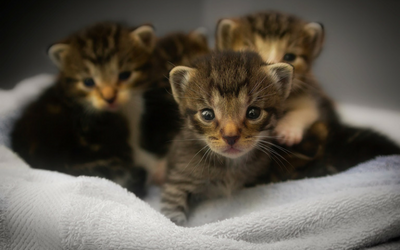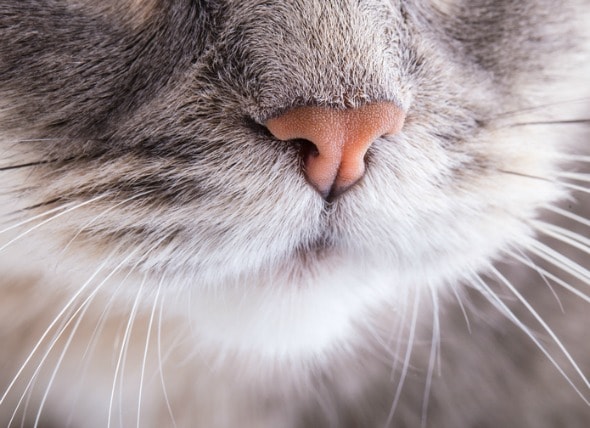chlamydia in cats prevention
Symptoms are most severe 9 to 13 days after onset becoming mild over the next 2-3 weeks. Tetracyclines are generally regarded as the antibiotics of choice for chlamydial infections Dean et al 2005.
2000 Controlled study of the efficacy of clavulanic acid- potentiated amoxicillin in the treatment of Chlamydia psittaci in cats.

. The most common signs of chlamydia in cats involve the eyes or the upper respiratory tract nose or throat and only when infection is not treated does it spread to the lungs. Felis is highly adapted to infecting cats so the risk of you contracting chlamydia from your cat is. Different strains of Chlamydia felis and Chlamydia pneumoniae bacteria cause significant eye infections in cats.
Chlamydia felis infection is relatively common in cats it is thought to be a cause of up to 30 of cases of chronic conjunctivitis. There is a vaccine for chlamydia on the market but it doesnt provide complete protection from the bacteria so it may not be readily available. For the first aid of cats eye infection you can check the ways on how to treat cats eye infection.
There is a vaccination available for Chlamydophila felis. Testing is required for a definitive diagnosis because chlamydia in cats is not the only cause of pink eye. Find details on Chlamydia disease in cats including diagnosis and symptoms pathogenesis prevention treatment prognosis and more.
Many different viruses cause cat respiratory infections with feline calicivirus being the most common. Chlamydia felis previously known as chlamydophila is an infection in cats caused by a certain type of bacteria. For conjunctivitis in your cat tetracycline ophthalmic ointment is preferred over chlortetracycline ointment.
Although cats of all ages can be infected the disease is most commonly seen in kittens or where. Sturgess CP Gruffydd-Jones TJ Harbour DA Jones RL. This disease can lead to conjunctivitis which is an infection and inflammation of the conjunctiva that covers the inner surface of eyelids and the white part of the eyes.
Feline chlamydial conjunctivitis is an infection caused by a bacterial organism called Chlamydophila felis. It will not prevent an infection but it will reduce the severity of outbreaks. Systemic antibiotics are more effective than local topical treatment Sparkes et al 1999.
PCR It is a major cause of acute and chronic conjunctivitis in cats particularly in multi-cat households breeding catteries and pedigrees. The recurrence of chlamydia is a common problem especially if the cats immune system is very weak. It can reduce the severity of symptoms but doesnt prevent infection in the first place.
All information is peer reviewed. Sometimes called Chlamydial Conjunctivitis chlamydia in cats is caused by the bacteria Chlamydia felis. If you have multiple cats in your house it is a good idea to get them all treated.
This bacteria has also been reported to infect the genital. Treatment for Chlamydia in Cat. Although a case of C.
What is Chlamydia felis. It is a bacteria that invades and infects your cats eyes and is one of the most common causes of conjunctivitis in cats. Conjunctival injury in cats.
In cats with conjunctivitis the conjunctiva becomes swollen and red. Felis is considered as a primary and important agent in the etiology of infectious diseases of the upper respiratory tract and eyes in cats having zoonotic potential. If your cat goes out doors it is a good idea to get the Chlamydia vaccination.
Ask your vet for doses of preventative antibiotics to give to your other cats. Cats that have developed this infection will often exhibit traditional signs of an upper respiratory infection such as watery eyes runny nose and sneezing. Treatment and prevention of chlamydia in cats.
The disease in cats is also known as feline pneumonitis which can be misleading because these bacteria rarely cause pneumonia in cats. How to Prevent Chlamydia in Cats. These can last for up to several weeks even if treatment has been started.
Therefore the vaccine is only recommended for high. Chlamydia is spread by close or direct contact with an. The treatment methods followed for the disease are.
Chlamydiosis refers to a bacteria based chronic respiratory infection caused by the Chlamydia psittaci bacterium. Felis can cause up to 30 of chronic conjunctivitis in cats. Chlamydia felis is a Gram-negative obligate intracellular bacterium.
1999 The clinical efficacy of topical and systemic therapy for the treatment of feline ocular chlamydiosis. A small percentage of cats can develop side effects such as lethargy lameness depression loss of appetite and fever. Cats with chlamydia usually develop symptoms about 5 days after exposure.
Treat all the cats in your home. With treatment the prognosis is positive. Chlamydiosis spreads easily from cat to cat.
Chlamydial conjunctivitis is an infection of the membrane around the eye the conjunctiva. Feline chlamydia is a bacteria-based disease that causes upper respiratory infection in cats. Many different strains of chlamydia-type bacteria exist most being highly species specific each strain usually only infecting one or a small number of different animalsspecies.
Feline chlamydophila disease refers to infection with a type of bacterium called Chlamydophila felisThis was formerly known as Chlamydia psitacci var felis. There is a vaccination for Chlamydia. If you have more than one cat and one gets chlamydiosis take preventative measures.
This will prevent the spread of the disease to the other cats in your household. Tetracyclines are regarded as the most effective antibiotic for use against Chlamydia psittaci infection in cats. Cat chlamydia while a serious threat and a potentially chronic disease is easily preventable through vaccination and cured by antibiotics and replacement fluid therapy.
The most common signs of chlamydia in cats involve the eyes or the upper respiratory tract nose or throat and only when infection is not treated does it spread to the lungs. We investigated 13 cats aged between 2 months and 7 years in which conjunctivitis rhinitis laryngotrachei. Treatment Chlamydia infection in cats can be treated very effectively with antibiotics.
Chlamydia is a disease caused by a bacterium called Chlamydophila felis. Chlamydial conjunctivitis in cats is an infection caused by a bacterial organism. Felis has been reported in man the risk of zoonotic infection is negligible.

Upper Respiratory Infection Chlamydia In Cats Petmd

Pet Vaccinations Parasite Prevention For Cats Dogs Kinston

Vaccinations Parasite Prevention For Cats Dogs San Diego

Chlamydia And Cats What To Expect Petful

Chlamydia Disease Bishops Stortford Vets

Upper Respiratory Infection Chlamydia In Cats Petmd

Vaccinations Parasite Prevention For Cats Dogs Novato

Feline Chlamydophila Feline Chlamydia Upper Respiratory Bacterial Infection In Cat Or Kitten Natural Animal Formulas Providing A Worldwide Service

Chlamydial Conjunctivitis In Cats Vca Animal Hospitals

Chlamydophila Felis Clinician S Brief

Chlamydia In Cats What It Is And What It Isn T Catster

Feline Chlamydophila Feline Chlamydia Upper Respiratory Bacterial Infection In Cat Or Kitten Natural Animal Formulas Providing A Worldwide Service

Pet Vaccinations Parasite Prevention For Cats Dogs In Louisa

Vaccinations Parasite Prevention For Cats Dogs Bellevue

Chlamydial Conjunctivitis In Animals Eye Diseases And Disorders Msd Veterinary Manual

Chlamydia In Cats What It Is And What It Isn T Catster
/Kittens-de94dd79a26540569bf7fa6326885464.jpg)

